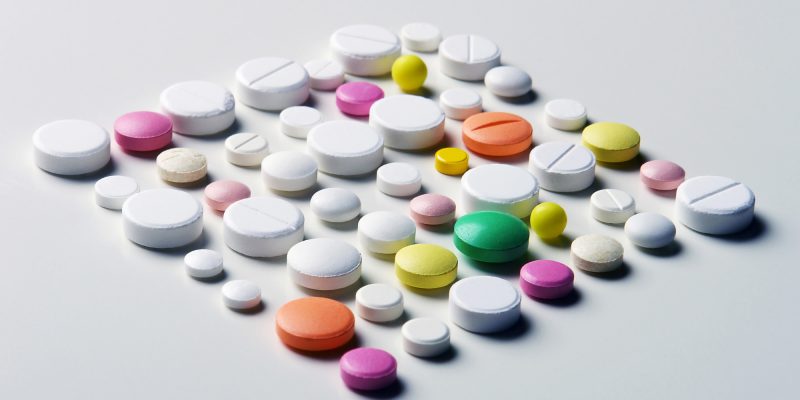A visual examination of the mammary gland in the halo of the nipple reveals small “pimples” that rise slightly above the skin surface. These anatomical formations are called "Montgomery hillocks" in honor of the scientist who first described them. As a rule, they do not cause much concern, but in some conditions of the female body they can manifest themselves.
Material Content:
What are Montgomery hillocks
Official medicine considers these formations to be vestigial glands, which have practically lost their function. Tubercles are located in the pigmented area around the nipple. Their number can be both small (from 4 pieces), and significant - up to 20 - 30 formations.
There is no consensus among scientists about the affiliation of tubercles to a certain type of gland. Some doctors consider them greasy, since the secretion contains a fatty substance that prevents drying of the breast nipple.
In addition, the secreted secretion has weak bactericidal properties, being a barrier to infection. Other scientists have a different opinion, arguing that the activation of Montgomery tubercles contributes to a change in hormonal levels.
Reasons for the appearance
Lumps are the anatomical formations with which a female child is born. In a newborn, during a visual examination, they are almost invisible. But, as the girls grow older, these formations begin to become more pronounced.
The following reasons for the appearance of Montgomery tubercles are noted:
- Puberty. At 13-14 years old, puberty of the girl begins, when a change in the hormonal background of the body (“hormonal explosion”) appears.The mammary glands begin to grow, increasing in volume. The tubercles become more visible, rising above the surface of the skin.
- Before menstruation.
- During pregnancy and lactation.
Only in these periods the Montgomery tubercles manifest themselves most vividly.
What education looks like
Normally, the formation in the halo around the nipple is subtle, painless and does not secrete any secret. The mammary gland in a state of hormonal "rest" during palpation is soft, the nipple is not strained. Due to the individual characteristics of the body, tubercles in some women can be pronounced, and in some, practically absent. In both cases, this anatomical feature is considered normal.
If an increase in tubercles is accompanied by hyperemia (redness), pain, a possible increase in temperature to subfebrile numbers, then this process indicates inflammation, that is, a pathology that requires treatment.
Menstruation
In the body of a woman in reproductive age, during the period of egg maturation and the formation of the monthly cycle, a hormonal surge occurs. At this time, Montgomery tubercles appear before menstruation, which become painful when touched.
This means that the body is ready to conceive a child. This is a normal state of the female body. If fertilization has not occurred, the hormonal background gradually returns to its original state. The tension of the tubercles and soreness pass, and they again become subtle.
In this case, no changes in the halo of the nipple are noted, including the intensity of pigmentation remains at the same level.
Montgomery tubercles during pregnancy
The most significant changes in the female body occur during the expectation of a child. The mammary glands at this time increase in volume by 2 to 3 times, preparing to feed the baby. Montgomery tubercles during pregnancy also increase in size, and the intensity of halo pigmentation increases.
The functions of these formations most clearly begin to manifest themselves during lactation, the significance of which is very important for the newborn:
- During breastfeeding, tubercles secrete a secretion that has a bactericidal property that protects the baby from infection with mother's milk. Therefore, doctors do not recommend a woman to wash her nipples with soap before feeding her baby, since the aggressive substances that make up her will destroy this barrier.
- The liquid secreted by the tubercles protects the nipple shell from drying out, which is the prevention of the development of cracks in them.
- The secret produced by the tubercles contains in its composition special substances that contribute to a faster baby’s getting used to the breast.
- In some cases, after birth, colostrum begins to stand out from the tubercles, which is then replaced by milk. In this case, it is believed that the child receives more nutrition with active lactation not only of the mammary glands, but also of the tubercles.
Not always an active increase in tubercles can accompany pregnancy.
Sometimes they may not show themselves or appear in a very small amount. This condition is not a pathology and depends on the individual characteristics of the woman's body.
Inflammatory processes
In case of violation of the integrity of the outer integument of the tubercle and infection, an inflammatory process may develop, a characteristic feature of which is:
- swelling of the tubercle, accompanied by flushing and soreness;
- a change in its shade due to accumulation of exudate;
- secretion of pus or serous secretion with light pressure;
- breast tension due to the inflammatory process;
- the appearance of warty growths in the paralosal region.
If the Montgomery tubercle is inflamed, this does not mean that only the infection was a mandatory cause.Such an education may be malignant or benign. The inflammatory process of the tubercles can develop as a result of eczematous lesion, which is localized in the areola of the nipple.
As a rule, this process is of an infectious-allergic nature. Often the disease is accompanied by itching, secretion of serous fluid, the appearance of cracks in the nipple. The cause of the development of such a pathology can be a trauma to the nipple with the teeth of the child.
Self-medication in this case is unacceptable. Only a specialist can diagnose a pathological process in this area of the mammary gland and prescribe the correct treatment.
Important! The appearance of inflammation in the tubercle is an indication for urgent consultation of a specialist in order to determine the cause of the appearance of pathology. Any actions associated with mechanical or thermal effects on the inflamed tubercle are strictly prohibited.
Treatment features
With inflammation of the formation in the halo of the nipple of the breast of any etiology, treatment is prescribed only by a specialist. If the inflammatory process does not occur during pregnancy, therapeutic measures include a wider prescription of various drugs.
It can be means for both internal and external use:
- antibiotics
- anti-inflammatory drugs;
- antihistamines that reduce the allergic mood of the body;
- vitamin therapy;
- herbal preparations;
- antiseptics for external use;
- physiotherapy (UHF, magnetotherapy).
If inflammation of the tubercles occurs during pregnancy, therapeutic measures are carried out mainly by means for external use. The appointment of antibiotics and other medications is only for indications, taking into account the duration of pregnancy and the intensity of the spread of inflammation.
In some cases, surgical removal of the tubercle is indicated if the inflammatory process is started or if there is a cosmetic defect when the Montgomery tubercles are of considerable size. In this case, plastic surgery is performed at the request of the patient in the absence of contraindications.



















